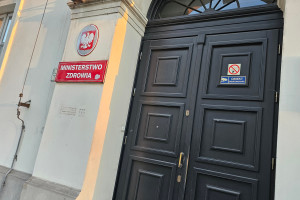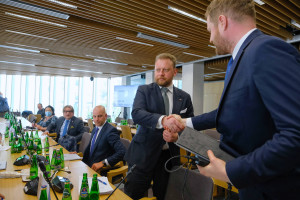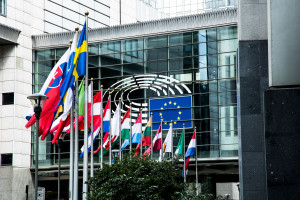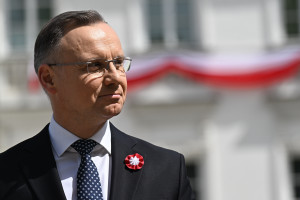Children's health resorts are in crisis. The Sejm discusses the pilot program: this is the last call before the rest of the facilities close.

- The number of children referred to spas is decreasing year by year. In 2024, 6,700 children aged 3-18 benefited from spa treatment, representing only 1.6% of the total number of people treated in spas.
- Entities running spa wards for children are having difficulty balancing year-round costs and revenues, which is leading to the closure of further wards and may completely eliminate spa treatment for children in Poland.
- This is to be counteracted by a pilot of changes that would cover two stationary services: hospital spa treatment for children aged 3-18 and sanatorium spa treatment for children aged 3-6 under adult supervision.
- The main goal of the pilot is to test solutions involving direct patient qualification and referral for spa treatment. Each pediatric e-referral for inpatient spa treatment would not be subject to the National Health Fund (NFZ) qualification process, but would be directly released into the general circulation system.
"Children's health resorts need systematic support to prevent them from closing. The only time they're under capacity is during the summer holidays. Before and after, beds in health resorts are empty because parents don't send their children there. Doctors also don't refer children to health resorts outside of the summer holidays because they don't know that qualified teaching staff are available for their young patients. For example, the health resort in Kudowa-Zdrój is subsidized by the Marshal of the Lower Silesian Voivodeship. However, the subsidies may soon run out because there's no one to teach," said Deputy Speaker of the Sejm Monika Wielichowska at a meeting of the Parliamentary Group for Supporting the Development of Health Resorts and Health Resort Municipalities.
"Therefore, systemic changes are needed, which require not so much costs as a different approach. The point is to firstly issue referrals to sanatoriums, and secondly, implement them," she added.
Aleksandra Siedzik , national consultant in the field of balneology and physical medicine, presented the assumptions of the pilot change which, in her opinion, may improve the situation.
The application in this matter was submitted to the Ministry of Health for the first time in 2023. The response was negative at that time, so it was submitted for a second time in May this year, with the recommendation of the Union of Polish Spas.
As the national consultant explained, the idea is to enable direct piloting, bypassing the National Health Fund, of qualifying and referring a selected group of patients for spa treatment services. The pilot would cover two in-patient services dedicated to children and adolescents:
- spa hospital treatment for children aged 3-18,
- spa treatment for children aged 3-6 under adult supervision.
"Why is the pilot program necessary? Although Polish children and adolescents have health problems, and we also have significant rehabilitation deficiencies, which also affects the youngest, we are observing a tendency not to refer children to health resorts. Among our youth, there is a huge problem with obesity, postural defects, allergies, respiratory diseases, and behavioral addictions. Despite this, the number of children referred to health resorts is decreasing year by year," Aleksandra Siedzik pointed out.
"For example, at the "Jagusia" Children's Spa Home in Kudowa-Zdrój, the only one still operating in Lower Silesia, the National Health Fund (NFZ) has contracted seven spa hospital treatment sessions for 2025 for just 425 patients , from June to November. This means that entities operating spa wards for children have difficulty balancing annual costs and revenues," she noted.
- This leads to the closure of further departments, and at the end of this road we may encounter the effect of complete liquidation of children's spa treatment in Poland - she warned.
What do the numbers say?According to data cited by the national consultant at the Team meeting, 6,723 children aged 3-18, or 1.6% of the total number of people treated in spas, benefited from spa treatment in 2024. For comparison, in 2018 , this figure was nearly 16,000 children, and in 2022 – 8,200.
In 2024, fewer than 3,000 inpatient stays were provided as spa treatment for children aged 3-6 under adult supervision. In 2018 , there were 6,600 such stays, and in 2022 , nearly 3,500 . The same trend applies to hospital treatment for children aged 3-18.
The situation is even worse in the case of sanatorium treatment for children aged 7-18, which not a single patient took advantage of in 2023 or 2024. In 2018, there were nearly 830 such treatments, and in 2022 – only 35.
Aleksandra Siedzik reminded that spa treatment for children is currently provided by 10 entities in 6 spas in:
- Ciechocinek,
- Dąbki,
- Goczałkowice-Zdrój,
- Kudowa-Zdrój,
- Rabka-Zdrój,
- Rymanów-Zdrój.
Due to the decreasing number of referrals and the clear seasonality of children's stays (holidays) and the resulting lack of balancing, in recent years children's hospitals and sanatoriums have ceased to operate in:
- Kołobrzeg,
- Krasnobród,
- Szczawno-Zdrój,
- Szczawnica,
- Dąbki ("Argentyt" Health Resort),
- in Rabka (sanatorium ward for children 3-6 years old).
"The problem is growing, as can be illustrated by the situation in March 2025. At that time, over 185,000 people were waiting in line for spa treatment, including 93 children aged 3-18 for treatment in a spa hospital and 115 children aged 3-6 for treatment in a sanatorium under adult supervision," noted the national consultant.
Pilot Goals: "All of this is feasible and very necessary.""We are currently talking about the need to reactivate pediatric spa treatment, which requires urgent changes to the way we qualify and refer young patients to spas, as well as extensive educational campaigns on spa treatment. This is the final straw: either appropriate decisions are made, or all the centers still operating will be closed. We risk wasting enormous potential, which will be very difficult to rebuild," warned Aleksandra Siedzik.
As she explained, the proposed pilot project aims to prevent this. It aims to test solutions that directly qualify and refer patients for spa treatment.
Its goals also include:
- optimizing the use of hospital potential,
- specifying the indications and contraindications to treatment,
- optimization of the organization of spa treatment
- development of a catalogue of JGP groups for spa treatment services for children.
"Parents fear that spending time at a health resort during the school year will cause their child to fall too far behind, but hybrid learning is possible – the child can have contact with teachers and pass the same tests that take place in school. All of this is possible, and that's one of the purposes of the pilot," argued the national consultant.
"This is similar to verifying treatment methods for children and organizing the provision of services. Within the JGP groups, individual programs should also be standardized, for example, for treating children with obesity ," she added.
"Every pediatric e-referral for inpatient spa treatment wouldn't be subject to the National Health Fund (NFZ) qualification process, but would be immediately available for general circulation. Children's spas would have to adapt their IT systems to this, but they already have AD KOLCE systems for rehabilitation, so this wouldn't be a major problem. All of this is possible, feasible, and above all, very necessary," emphasized Aleksandra Siedzik.
rynekzdrowia











